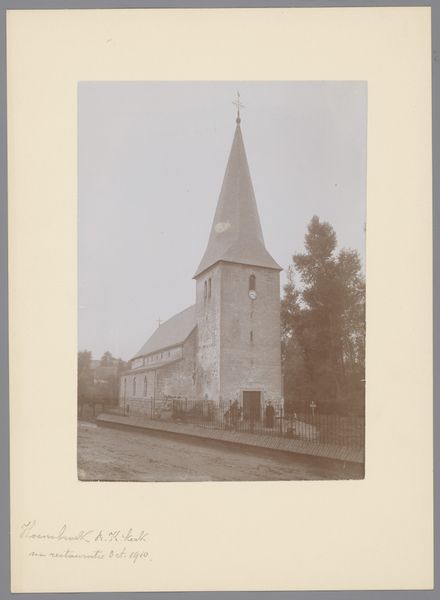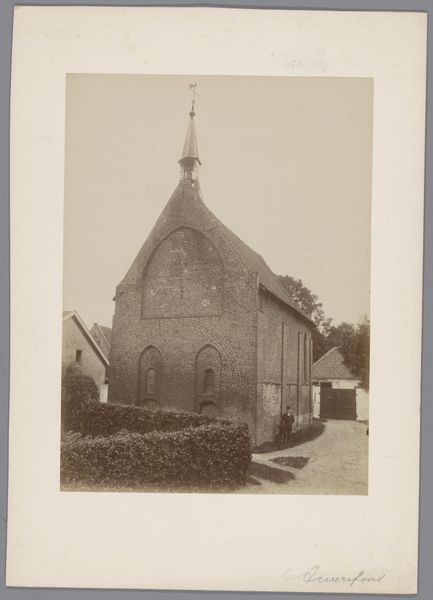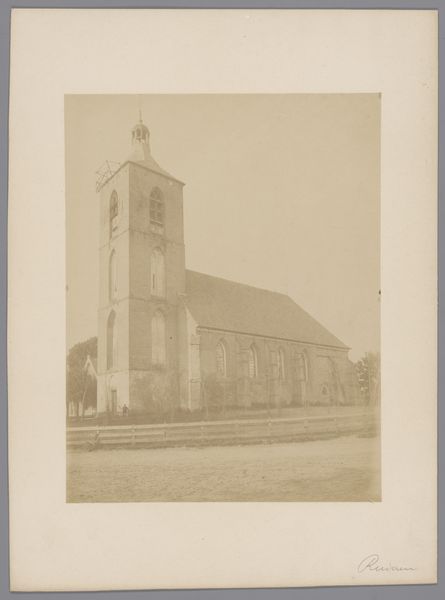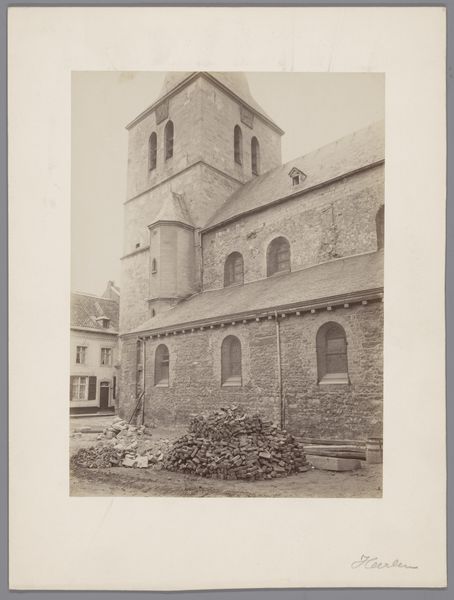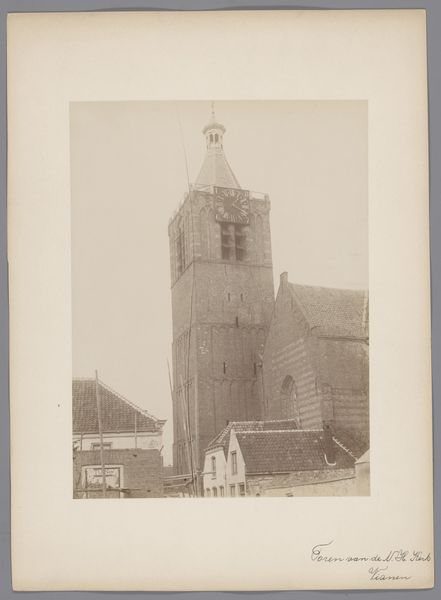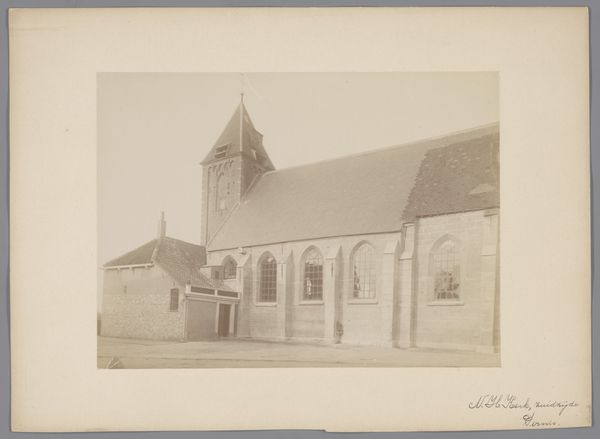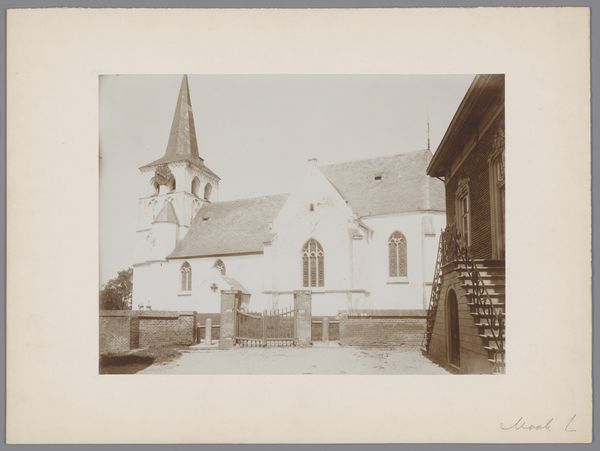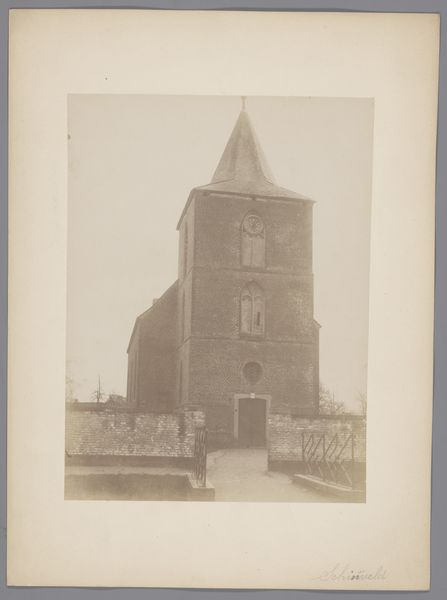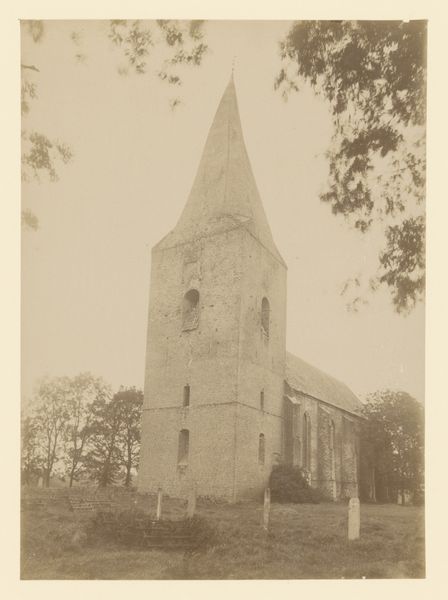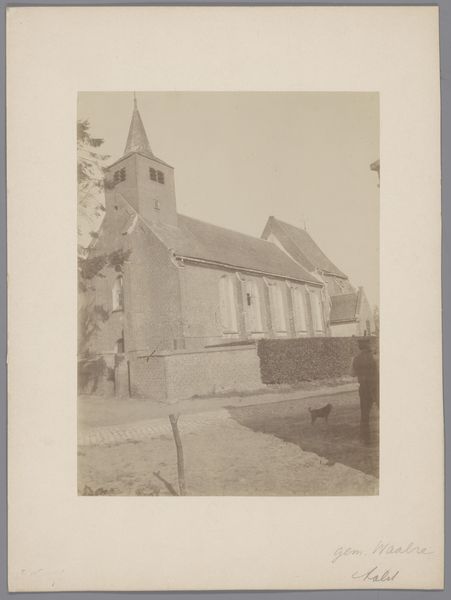
print, etching
# print
#
etching
#
landscape
#
realism
Dimensions: plate: 5.08 x 3.18 cm (2 x 1 1/4 in.) sheet: 10.48 x 9.53 cm (4 1/8 x 3 3/4 in.)
Copyright: National Gallery of Art: CC0 1.0
Editor: So, this is John Taylor Arms' etching, "Normandy," created in 1944. It depicts a church; the precision of the lines is remarkable. How do you see this piece? Curator: Given its creation during World War II, and the use of etching – a traditionally meticulous and labor-intensive printmaking process – it begs questions about the artist’s engagement with wartime materiality and labor. Look at the way the image meticulously renders stone and tile – materials which had become difficult to come by, with labor being reassigned. How might that painstaking depiction connect to a desire to preserve or monumentalize in a time of potential destruction? Editor: That's interesting. I hadn’t thought about the constraints of wartime resources affecting art like this. So, are you suggesting that Arms' choice of materials for the artwork directly comments on these wartime limitations? Curator: Absolutely! I would argue that it is more than mere depiction, it is a meditation on what it means to represent stability, tradition, and skill in a world where all these things are subject to disruption. Consider also, how the "craft" of etching relates to more utilitarian skills – all subject to redirection in times of conflict. Editor: So it is not just an image, it’s a document reflecting the anxieties and also the resilience regarding material culture during wartime? Curator: Precisely! The piece acts as both record and commentary on the value, manipulation, and potential loss of material stability during such a time. It highlights how a “high art” like etching draws from and responds to societal changes that effect labor and material. Editor: I’ll never look at an etching the same way again! Thanks for pointing out those connections between process and the world outside the artwork. Curator: It just goes to show that even the most seemingly straightforward image can reveal layers about production, labor, and the social context in which art is created.
Comments
No comments
Be the first to comment and join the conversation on the ultimate creative platform.
